In Photos: The World's Oldest Indigo Dye
Huaca Prieta
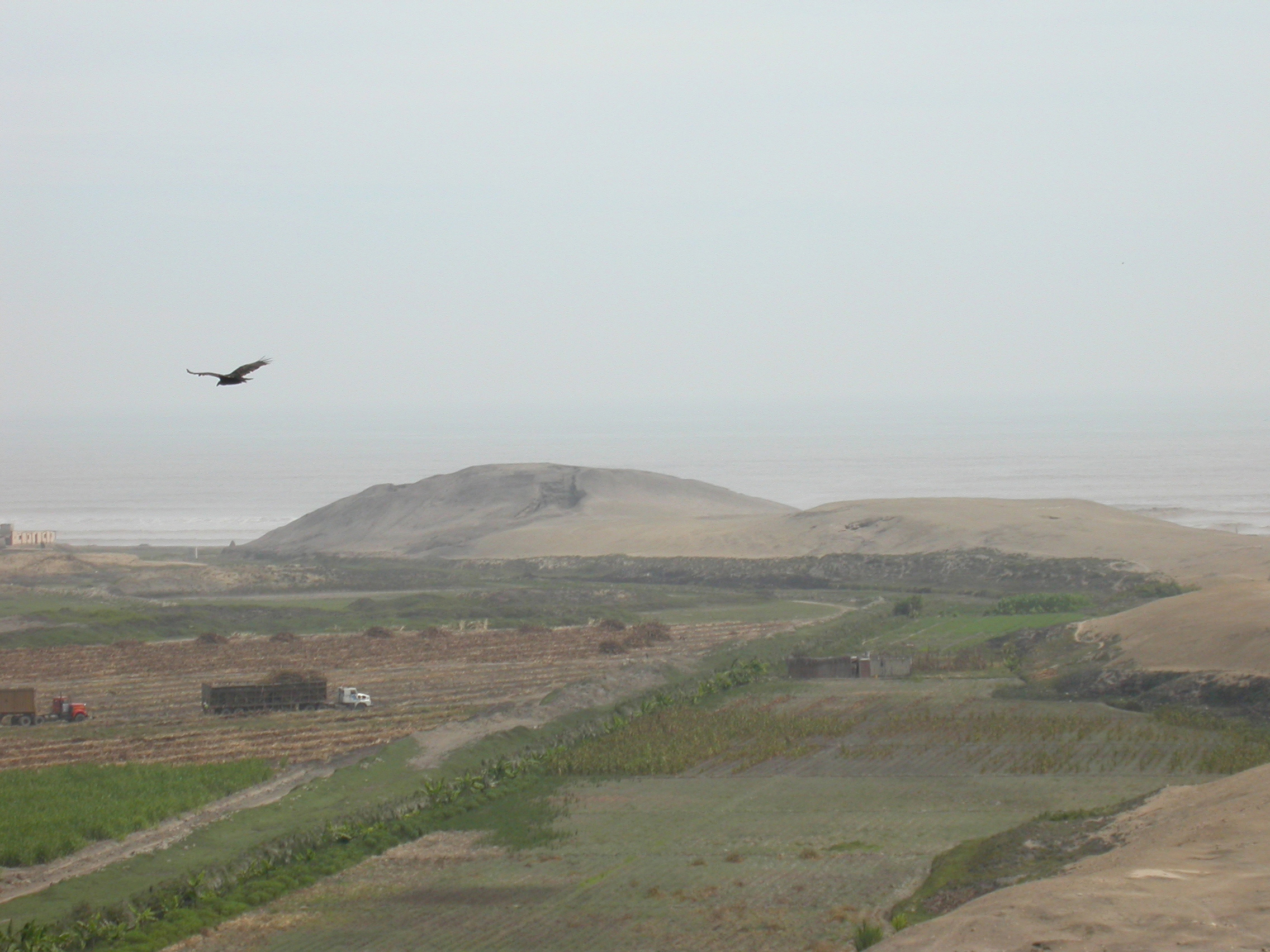
Huaca Prieta is an earthen mound in northern coastal Peru, built by a culture that pre-dated the invention of ceramics in the region. It was probably a temple site. Now, researchers have discovered scraps of fabric at the site bearing indigo dye, pushing the oldest use of indigo dye in the world back to about 6,200 years ago.
Ancient Indigo
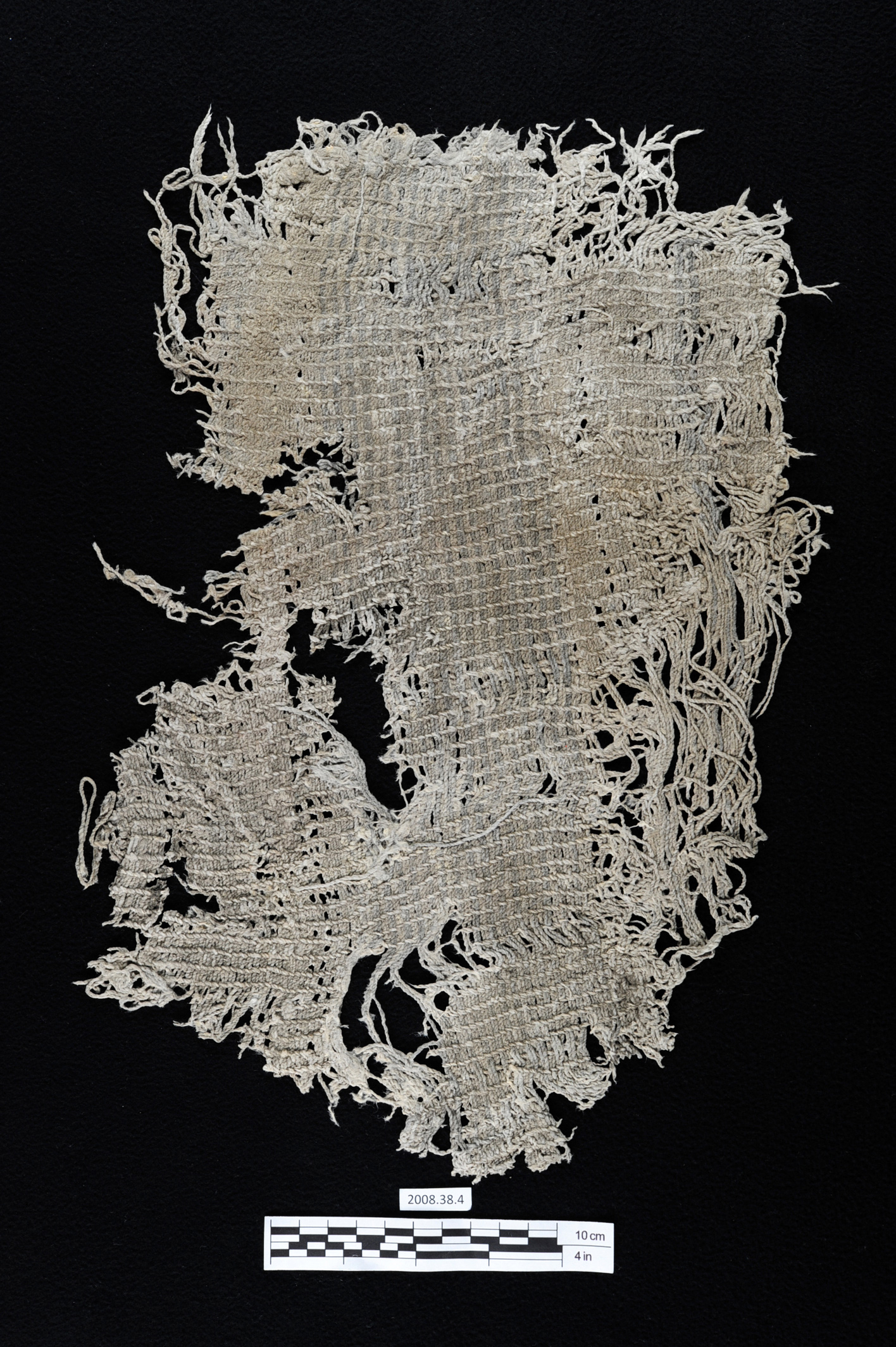
A scrap of indigo-dyed fabric between 5,585 and 5,848 years old. The cotton pieces were found embedded in a concrete-like material that made up the Huaca Prieta temple. They showed signs of being cut or torn, perhaps as a sort of ritual "killing," said study researcher Jeffrey Splitstoser, an expert in Peruvian textiles from George Washington University. Some of the fabric also looked as if it had been soaked with water and squeezed out.
[Read full story on the indigo-dyed fabrics]
Fabric Bundle
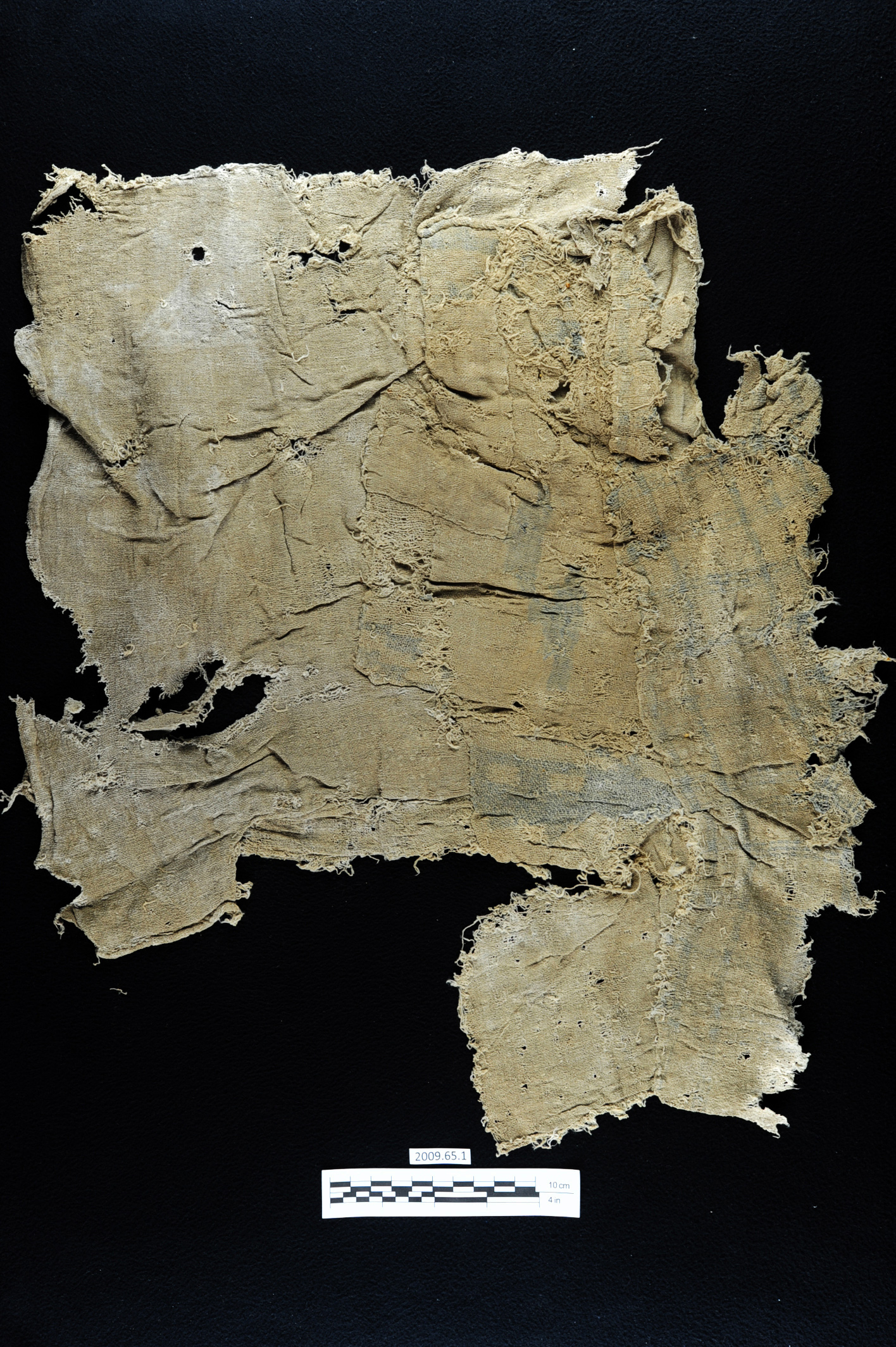
Multiple plain-weave fabrics are sewn together in a bundle, including one scrap decorated with indigo blue stripes and another scrap decorated with indigo shapes of indeterminate form. Indigo is a complicated dye to make, Splitstoser said, requiring a process of fermentation, drying and reconstitution.
Temple Excavations
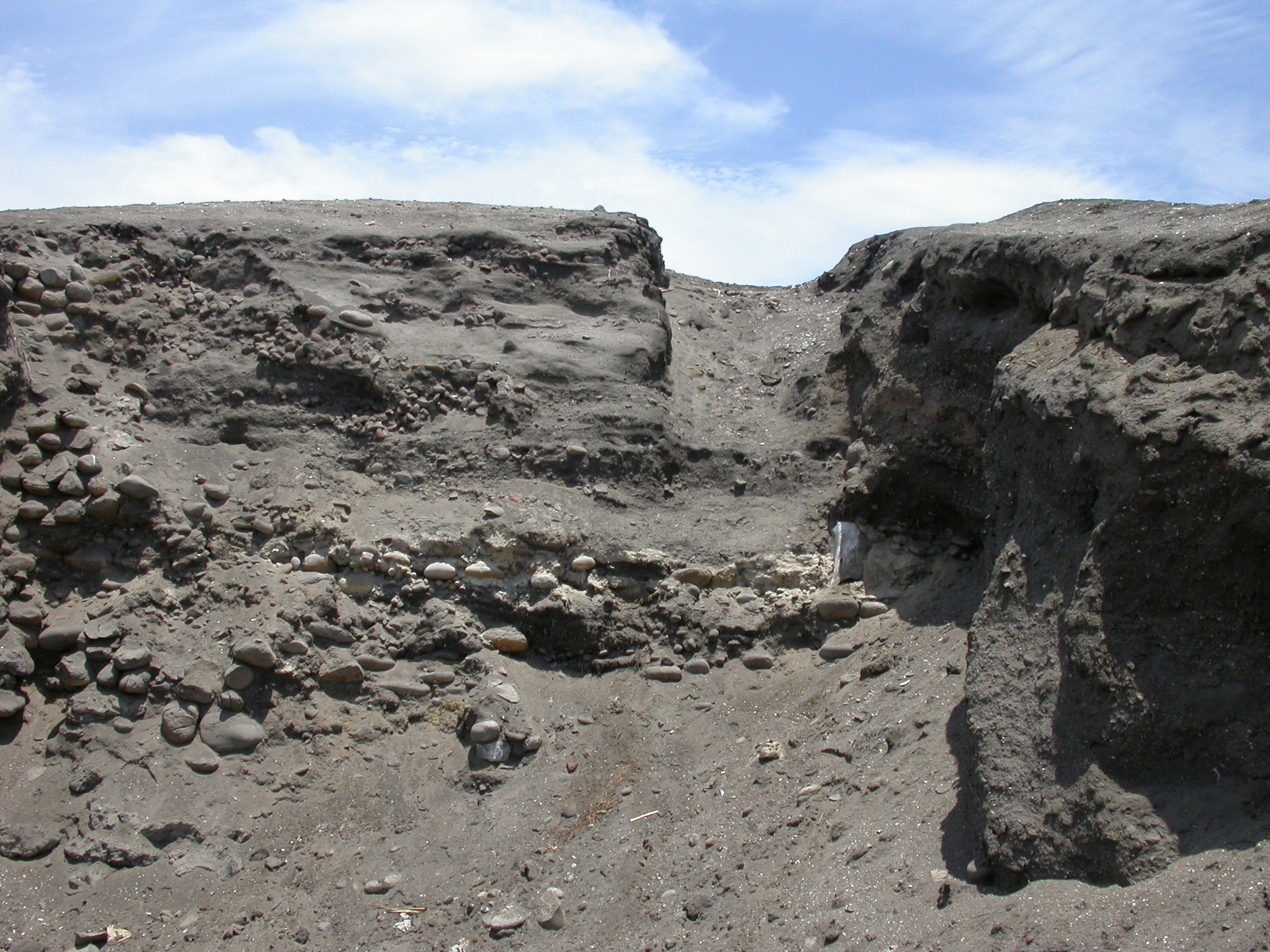
An excavation cut made in the 1940s shows layers of floor and architecture at Huaca Prieta. The mound was built over a dwelling. Over the years, as the temple architecture crumbled, the people at Huaca Prieta added new layers of a concrete-like layer made of ash and shells. The fabrics were found embedded in these concrete layers, alongside gourds. They had been left along the ramp that led to the top of the temple.
[Read full story on the indigo-dyed fabrics]
Woven Design
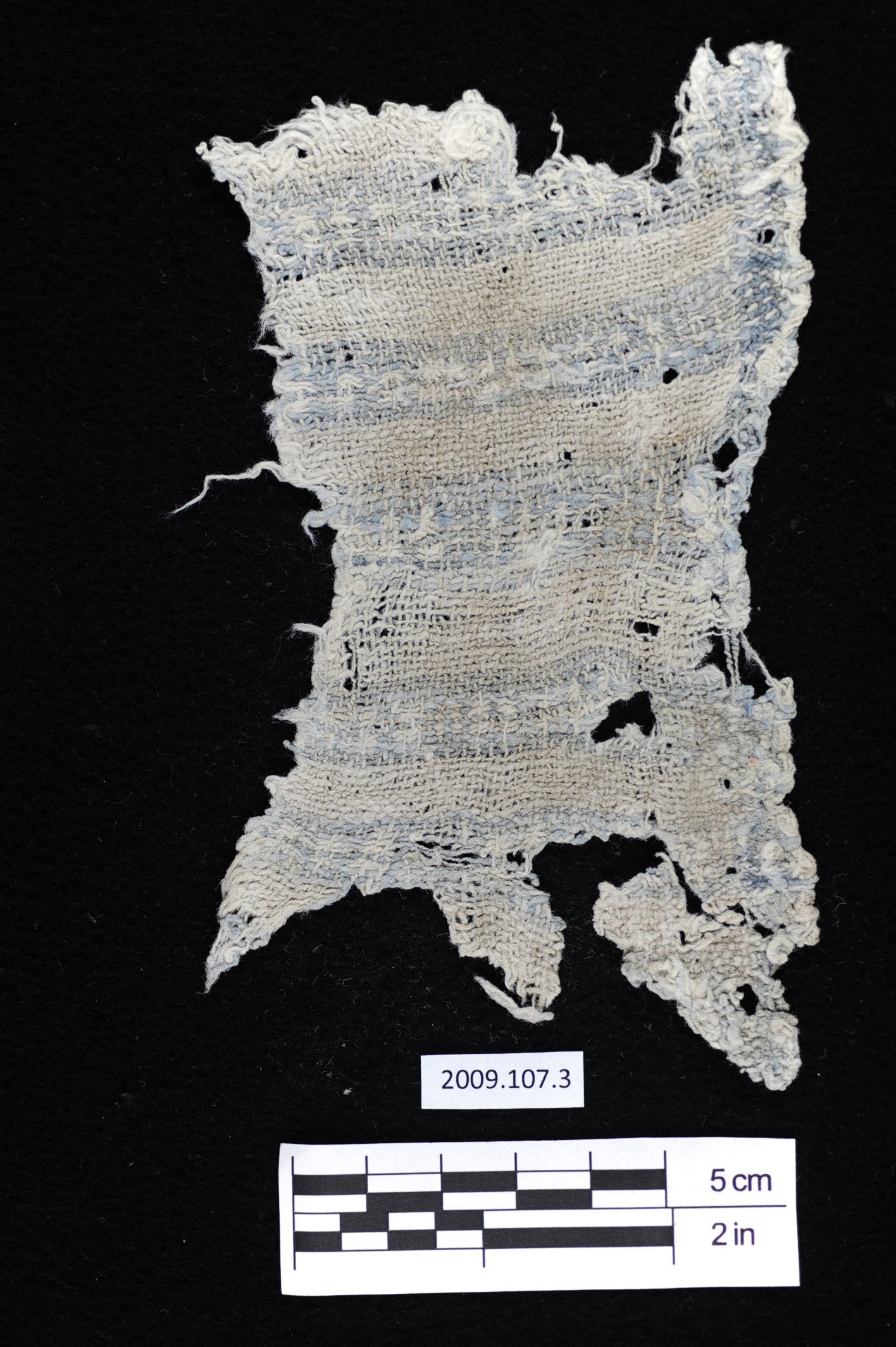
Prior to the discovery of the Huaca Prieta indigo, the oldest known indigo-dyed fabric came from Egypt 4,400 years ago. Written references to indigo dye date back to about 5,000 years ago in the Middle East, Splitstoser said. The Huaca Prieta samples predate even these written records by at least 1,000 years. The textile-makers from Huaca Prieta used locally grown cotton and also milkweed fiber. The former provided an off-white or tan yarn, while the latter made bright white yarn. Yarns were also dyed with iron pigments called ochre to get reds and yellows.
Get the world’s most fascinating discoveries delivered straight to your inbox.
Examining An Ancient Textile
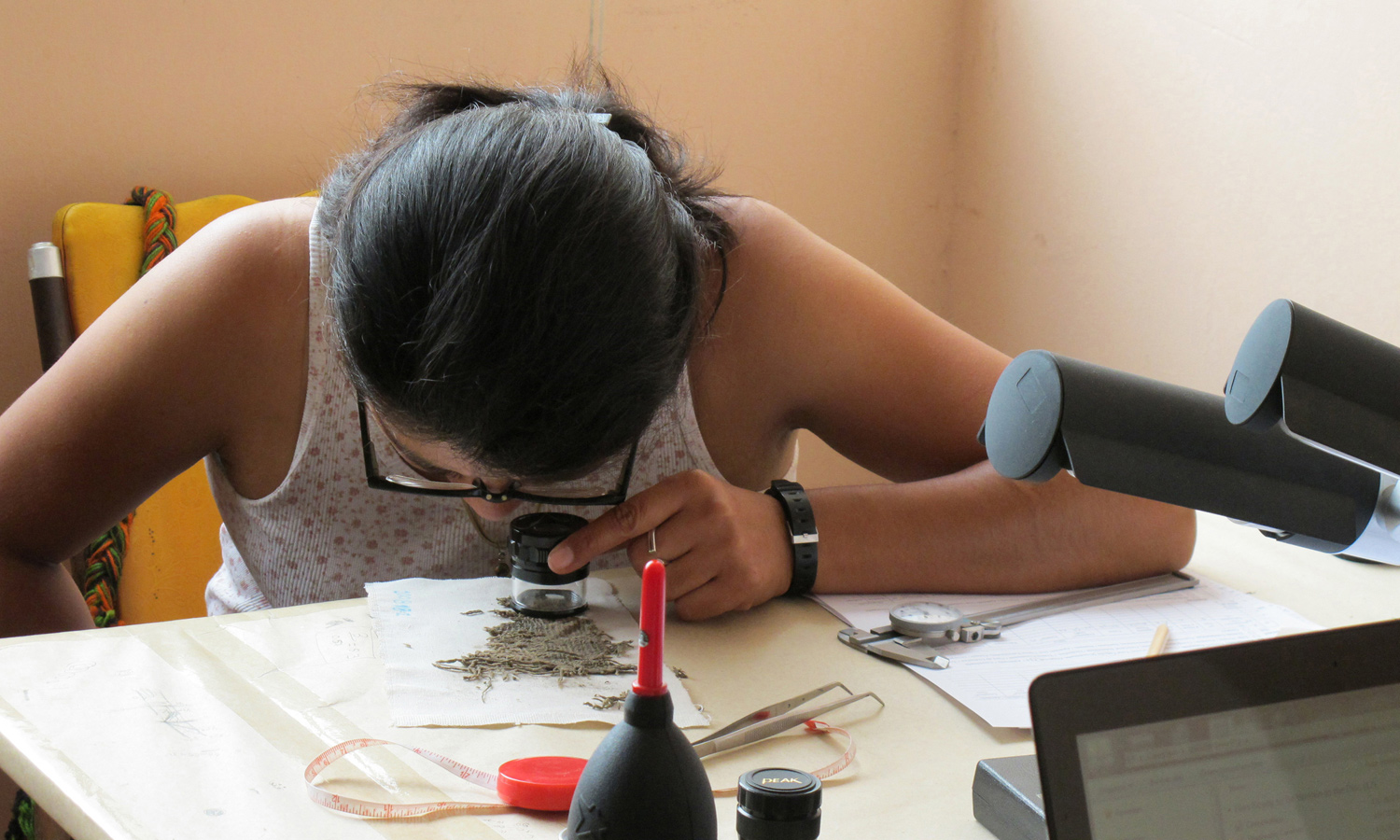
Arabel Fernández López, a project conservator, examines a scrap of Huaca Prieta fabric. When the cotton pieces came out of the ground, they were a dirty, sooty color, Splitstoser said. It wasn't until conservators cleaned the fragile fabrics that the blue color became visible. Even then, the first tests on the fabrics found no molecular signature of indigo. It took a second test, using more sensitive chemistry equipment, to detect the dye.
Prehistoric Design
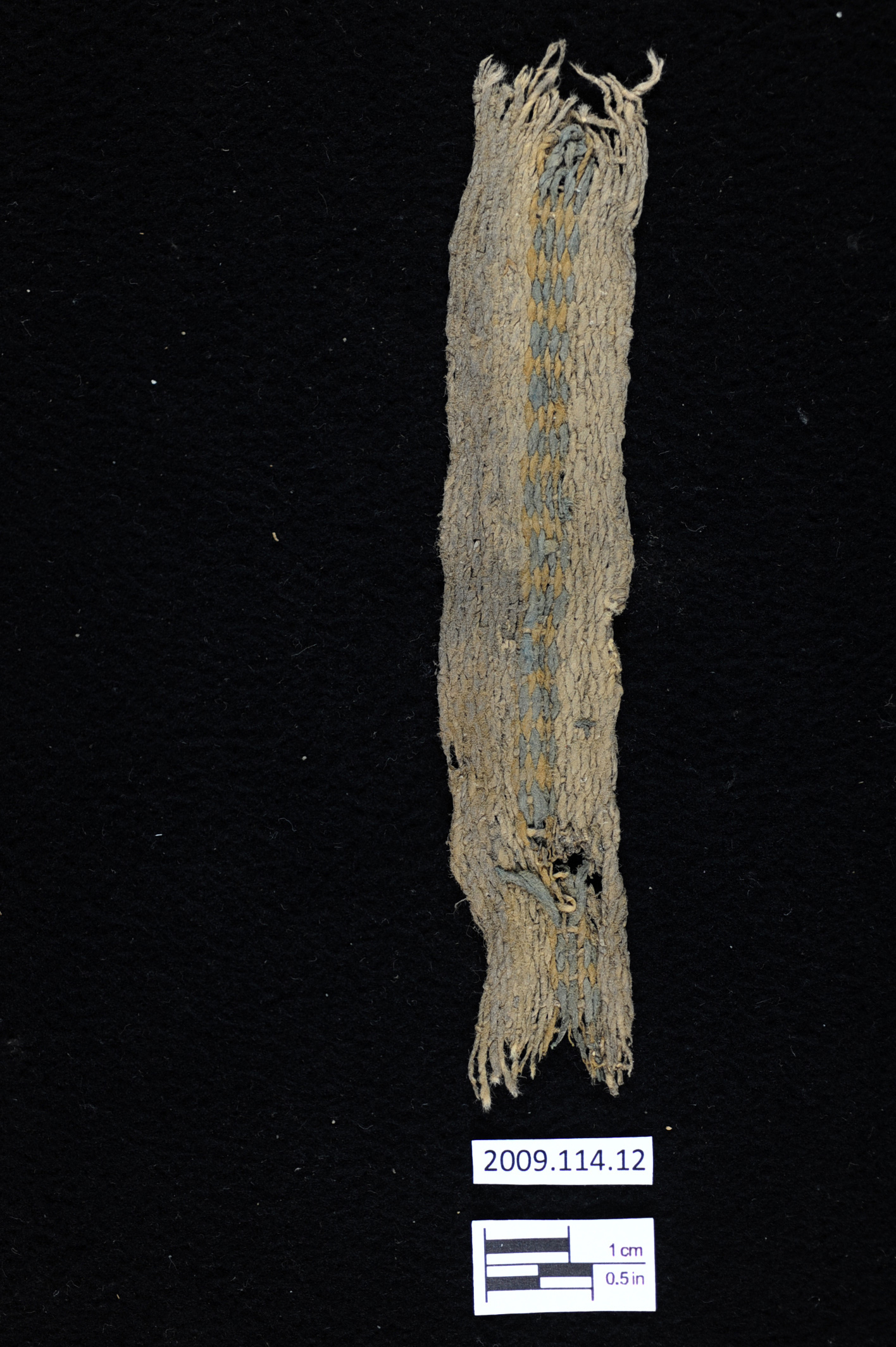
A plain-weave cotton band or belt just under an inch (2.2 centimeters) wide. This piece dates back between 3,455 years ago and 4,107 years ago. The center of the band is made from yarn dyed with indigo blue, intertwined with yarn died ochre-yellow.
"They had a pretty nice palette" of colors, Splitstoser said: Blue from indigo, red and yellow from orchre, and brown, tan, white and off-white from cotton and milkweed fibers.

Stephanie Pappas is a contributing writer for Live Science, covering topics ranging from geoscience to archaeology to the human brain and behavior. She was previously a senior writer for Live Science but is now a freelancer based in Denver, Colorado, and regularly contributes to Scientific American and The Monitor, the monthly magazine of the American Psychological Association. Stephanie received a bachelor's degree in psychology from the University of South Carolina and a graduate certificate in science communication from the University of California, Santa Cruz.


